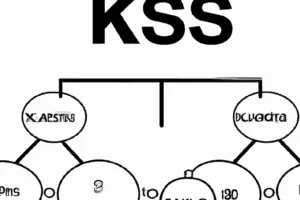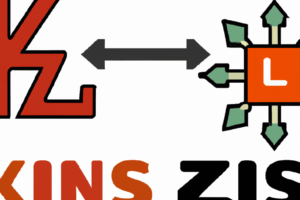
Unleashing the Power of Blockchain for a Sustainable Future
In an era where the environment is under constant threat, the search for innovative solutions has never been more urgent. Enter blockchain technology, a digital ledger known for its robust security, transparency, and decentralization. While blockchain has been widely recognized for its transformative potential in finance and supply chain management, its applicability in environmental conservation is a lesser-explored territory. This article, ‘Blockchain Technology: A New Ally for Environmental Stewardship,' delves into this groundbreaking intersection of technology and ecology.
Blockchain's potential in environmental stewardship lies in its ability to create a transparent and tamper-proof system for recording and verifying transactions. It can be leveraged to track carbon emissions, monitor the origin of goods, and ensure accountability in environmental commitments. As we navigate through the article, we will explore various ways blockchain is utilized for environmental purposes, including waste management, renewable energy, and wildlife protection. We will also look at real-world examples of blockchain-based environmental initiatives and discuss the challenges and opportunities in this developing field.
1. Blockchain's Potential in Environmental Conservation
The article highlights the potential of Blockchain technology in environmental stewardship. Blockchain, a decentralized and secure system, can provide transparency and traceability in environmental conservation efforts, making it a powerful tool in promoting sustainable practices and preventing environmental degradation.
2. Enhancing Traceability and Accountability
Blockchain can enhance traceability and accountability in environmental stewardship. It can track the lifecycle of goods from extraction to disposal, ensuring they adhere to environmental standards. This can discourage environmentally harmful practices and promote sustainability.
3. Facilitating Carbon Trading
The article discusses how Blockchain can facilitate carbon trading. By creating a transparent and tamper-proof system, Blockchain can ensure the credibility of carbon credits and promote their trade. This can incentivize businesses to reduce their carbon emissions and contribute to the fight against climate change.
4. Promoting Renewable Energy
Blockchain can also promote the use of renewable energy. It can enable peer-to-peer energy trading on a microgrid, allowing consumers to buy and sell surplus renewable energy. This can reduce reliance on fossil fuels and promote the use of clean energy.
5. Challenges and Limitations
Despite its potential, the article discusses the challenges and limitations of using Blockchain for environmental stewardship. These include the high energy consumption of Blockchain, the lack of regulatory frameworks, and the need for technological literacy among users. It emphasizes the need for further research and policy-making to maximize the benefits of Blockchain for the environment.
Blockchain's Role in Carbon Trading
Blockchain technology is revolutionizing the environmental sector by providing innovative solutions to carbon trading. This emerging trend offers a decentralized and transparent platform for carbon credit transactions, promoting environmental stewardship. Carbon credits are tradable certificates that grant the holder the right to emit one ton of carbon dioxide or any other greenhouse gas.
Blockchain-based carbon trading platforms are designed to be tamper-proof, thus ensuring the integrity of carbon credit transactions. This technology also eliminates intermediaries in the carbon market, making transactions faster, cheaper, and more efficient. Blockchain's potential for carbon trading is massive, with the World Bank estimating that the carbon market could be worth over $2 trillion by 2030.
In the future, blockchain could potentially streamline the carbon market by providing real-time data on carbon emissions and credits. This could enable regulators and market participants to make informed decisions, thereby promoting the efficient allocation of resources in the fight against climate change.
Blockchain for Sustainable Supply Chains
Blockchain technology is increasingly used to foster transparency and traceability in supply chains, promoting sustainable practices. This technology provides a decentralized ledger that records every transaction in a supply chain, from the extraction of raw materials to the delivery of the final product.
This emerging trend is particularly relevant in industries such as agriculture and mining, where unsustainable practices can have significant environmental impacts. For instance, blockchain could be used to track the origin of a diamond, ensuring that it was not mined in conflict zones and complies with environmental regulations.
In the future, blockchain could potentially revolutionize supply chain management by providing real-time data on the environmental footprint of products. This could enable consumers to make more sustainable choices, driving demand for environmentally friendly products and promoting green economies.
Decentralized Energy Grids and Blockchain
Blockchain technology is paving the way for decentralized energy grids, a trend that could transform the energy sector. This technology enables peer-to-peer energy trading, allowing consumers to buy and sell energy directly from each other.
This emerging trend has significant environmental benefits. Decentralized energy grids could promote renewable energy sources, as consumers could sell excess energy generated by their solar panels or wind turbines. This could potentially reduce reliance on fossil fuels and contribute to climate change mitigation.
In the future, blockchain could facilitate the integration of electric vehicles into the energy grid. This could enable electric vehicles to act as mobile energy storage units, enhancing the grid's stability and promoting the use of renewable energy. Furthermore, blockchain could enable real-time pricing in the energy market, allowing consumers to use energy more efficiently and reduce greenhouse gas emissions.
Blockchain's Role in Enhanced Traceability and Accountability
Blockchain technology, renowned for its decentralized and immutable nature, has emerged as a powerful tool in promoting transparency and accountability, crucial elements in environmental stewardship. Its application in supply chain management, for instance, can significantly improve the traceability of products, from raw materials to finished goods, thus enabling consumers and regulators to verify sustainability claims.
Companies like Provenance and Everledger are leveraging blockchain to track the lifecycle of products, ensuring they meet environmental and ethical standards. For example, Everledger uses blockchain to trace the origin of diamonds, helping to prevent the sale of conflict diamonds. This enhanced traceability can discourage environmentally harmful practices and promote sustainable operations.
Decentralized Energy Trading and Carbon Credits
Blockchain technology also holds significant potential in the energy sector, particularly facilitating peer-to-peer energy trading and managing carbon credits. The decentralized nature of blockchain allows for creating platforms where renewable energy producers can trade directly with consumers, bypassing traditional energy companies and grid operators.
LO3 Energy's Brooklyn Microgrid project is a prime example of this, where residents equipped with solar panels can sell excess energy to their neighbors through a blockchain-powered platform. This not only promotes the use of renewable energy but also fosters community participation in environmental stewardship.
In addition, blockchain can also streamline the management and trading of carbon credits. Carbon credits are a form of permit allowing the holder to emit a certain amount of carbon dioxide or other greenhouse gases. Blockchain can ensure the transparency and integrity of these transactions, preventing double counting or fraud, thus enhancing the effectiveness of carbon trading schemes in reducing greenhouse gas emissions.
Blockchain for Conservation and Wildlife Protection
Conservation and wildlife protection efforts can also benefit from blockchain technology. Blockchain can create immutable databases of wildlife populations, tracking species numbers and movements to help prevent illegal poaching and trading.
For example, the World Wildlife Fund (WWF) has partnered with ConsenSys to develop a blockchain platform to eliminate illegal fishing and human rights abuses in the tuna industry. The platform tracks the journey of tuna from bait to plate, ensuring the fish are legally caught and sustainably sourced.
Moreover, blockchain can encourage individual participation in conservation efforts through tokenization. Tokens representing a specific environmental value, such as a tree planted or a wildlife habitat preserved, can be issued to individuals who contribute to these efforts. This incentivizes conservation activities and creates a transparent record of these contributions.
With its unique features of decentralization, immutability, and transparency, blockchain technology can significantly promote environmental stewardship. Whether it's enhancing traceability in supply chains, facilitating decentralized energy trading and carbon credit management, or aiding in conservation and wildlife protection, blockchain can be a powerful ally in the fight against environmental degradation.
Blockchain Technology and Energy Consumption
One of the most controversial aspects of blockchain technology is its significant energy consumption, which contradicts its potential role in promoting environmental stewardship. The mining process, which is fundamental to most blockchain networks, involves complex computations that require a substantial amount of energy—for instance, Bitcoin's energy consumption rivals that of some countries.
However, it's important to note that not all blockchain technologies are created equal. Some, like the Ethereum network, are working towards more energy-efficient models, such as proof-of-stake, drastically reducing energy consumption. Additionally, blockchain technology can be leveraged to create decentralized energy markets, enabling peer-to-peer energy trading and encouraging the use of renewable energy sources.
Blockchain and E-Waste Generation
Another controversial aspect is the electronic waste (e-waste) generated by blockchain technology. This is especially true for blockchain networks that rely on mining, which typically requires dedicated hardware that becomes obsolete within a few years, contributing to the growing e-waste problem.
On the other hand, blockchain technology could be part of the solution to e-waste. For instance, blockchain could track and trace electronic products throughout their lifecycle, providing valuable data for recycling and disposal processes. This could incentivize manufacturers to design products with longer lifespans and promote responsible e-waste management.
Blockchain and Data Privacy
Lastly, concerns have been raised about the potential for blockchain technology to infringe upon data privacy, an issue that could indirectly impact environmental stewardship. Blockchain's inherent transparency means all transactions are visible to all network participants. This could lead to misuse of sensitive information, discouraging individuals and organizations from adopting blockchain-based environmental solutions.
However, it's essential to ensure that while all transactions are visible, the parties' identities can remain anonymous. Moreover, blockchain technology can be designed with various levels of privacy depending on the specific application. For instance, zero-knowledge proofs can be used to verify transactions without revealing any additional information. Furthermore, blockchain could enhance transparency and accountability in environmental governance, which could outweigh potential privacy concerns.
Understanding Blockchain Technology and its Potential for Environmental Stewardship
Blockchain technology, at its core, is a decentralized, digital ledger system that records transactions across many computers so that the records cannot be altered retroactively. This technology has the potential to revolutionize environmental stewardship by providing transparency, reducing fraud, and enabling peer-to-peer transactions without the need for intermediaries. For instance, blockchain could be used to track the lifecycle of products from extraction to end-of-life, ensuring that they are produced and disposed of in an environmentally responsible manner.
Blockchain in Energy Conservation and Efficiency
Blockchain technology holds significant promise in the field of energy conservation and efficiency. With the help of smart contracts, blockchain could enable peer-to-peer energy trading, allowing consumers to buy and sell excess renewable energy directly to each other. This could reduce energy waste and incentivize the adoption of renewable energy sources. A case in point is the Brooklyn Microgrid project in New York, where blockchain is being used to facilitate local energy trading.
Blockchain for Sustainable Supply Chains
Blockchain technology can also be a game-changer in creating sustainable supply chains. By providing a transparent and immutable record of transactions, blockchain can help verify the authenticity of green products and ensure that sustainable practices are followed throughout the supply chain. For example, De Beers, the diamond company, is using blockchain to track stones from the point they are mined right up to the point they are sold to consumers, ensuring they are conflict-free.
Blockchain in Carbon Emission Trading
Blockchain technology can also play a significant role in carbon trading, a market-based tool to limit GHG. The technology could provide a transparent and secure platform for transactions and be used to track and verify the carbon footprint of products. For instance, IBM and Energy Blockchain Lab are working to develop a blockchain platform for trading carbon assets in China.
Challenges and Concerns in the Adoption of Blockchain for Environmental Stewardship
While blockchain holds immense potential for environmental stewardship, its adoption is challenging. Concerns such as energy consumption, scalability, and regulatory issues must be addressed. For instance, the Bitcoin blockchain is notorious for its energy consumption, which is more than in some countries. However, alternative consensus mechanisms like proof of stake (PoS) are being explored to make blockchain more energy-efficient.
Future Perspectives: Blockchain and the Green Economy
As we move towards a green economy, blockchain technology could play a crucial role. From tracking renewable energy to verifying the carbon footprint of products, blockchain could provide the transparency and efficiency needed to make the green economy a reality. However, collaboration between technologists, environmentalists, and policymakers is essential for this to happen. With the right regulatory frameworks and incentives in place, blockchain could indeed be a powerful ally for environmental stewardship.
Case Study 1: Plastic Bank Empowers Recycling with Blockchain
To tackle the global plastic pollution crisis, Plastic Bank, a social enterprise, has leveraged blockchain technology to incentivize waste collection and recycling in developing nations. Plastic Bank's model is simple yet revolutionary. Individuals can collect plastic waste and exchange it for digital tokens at local collection centers. Securely recorded on a blockchain, the tokens can be used to purchase goods and services or even cashed out, providing a vital income source.
This blockchain-based model promotes recycling and environmental stewardship and brings financial inclusivity to impoverished communities. As of 2021, Plastic Bank has reportedly prevented over 1 billion plastic bottles from entering the ocean, a testament to the transformative potential of blockchain in environmental conservation.
Case Study 2: IBM and The Freshwater Trust Streamline Water Conservation
In a pioneering collaboration, IBM, The Freshwater Trust (TFT), and SweetSense Inc. have deployed blockchain technology to manage and track groundwater usage in California's Sacramento-San Joaquin River Delta. Home to a $7 billion agricultural industry, the region has been grappling with water scarcity and mismanagement issues.
The project uses IoT sensors to record real-time water extraction data, which is then stored on a blockchain. This ensures transparency and trust among stakeholders, including farmers, financiers, and regulators. Moreover, the blockchain platform enables the creation of a groundwater usage credit marketplace. Farmers can trade their water credits, incentivizing water conservation and efficient usage.
Since its inception, the project has significantly improved water management in the region, demonstrating how blockchain can effectively address complex environmental challenges.
Success Story: Energy Web Foundation's Decentralization of Renewable Energy
The Energy Web Foundation (EWF) is a global nonprofit organization that has successfully deployed blockchain technology to revolutionize the renewable energy sector. EWF has developed the Energy Web Chain, a public, open-source blockchain designed to support and verify energy sector transactions.
This blockchain platform enables energy assets, like batteries or solar panels, to be tokenized and their energy output to be traded on a decentralized marketplace. This not only democratizes access to renewable energy but also incentivizes its production.
One notable success of EWF's blockchain initiative is the case of Thailand's BCPG. The energy company used EWF's platform to create a peer-to-peer energy trading system for a Bangkok neighborhood. This allowed residents to trade surplus solar energy, reducing energy costs and carbon emissions.
These case studies and success stories underline the transformative potential of blockchain technology in promoting environmental stewardship. From incentivizing recycling and efficient water usage to democratizing access to renewable energy, blockchain is an invaluable ally in the quest for a sustainable future.
Blockchain for Environmental Data Integrity
Blockchain technology, a decentralized and distributed digital ledger, holds promise for environmental stewardship through its ability to maintain data integrity. The blockchain's immutable nature ensures that once data is stored, it cannot be altered or deleted. This feature is critical in environmental monitoring, where data authenticity is paramount.
For instance, in the case of carbon credits, blockchain can provide a transparent and tamper-proof record of emission reductions. It eliminates the possibility of double-counting or false reporting, enhancing the reliability and credibility of such initiatives.
Smart Contracts for Automated Compliance
Blockchain's smart contracts, self-executing contracts with the terms of the agreement directly written into code, can automate regulatory compliance. These contracts can be programmed to execute actions when certain conditions are met, ensuring adherence to environmental regulations without human intervention.
A practical application can be seen in waste management. Smart contracts automatically trigger payments to waste disposal companies once they prove the waste has been correctly disposed of, reducing administrative burden and enhancing accountability.
Decentralized Energy Grids
Blockchain technology can revolutionize the energy sector by enabling decentralized energy grids. These grids allow energy to be traded peer-to-peer, bypassing traditional energy companies. This could incentivize using renewable energy sources as individuals could sell excess energy produced by their solar panels or wind turbines directly to their neighbors.
Tokenization of Natural Resources
Blockchain also allows for tokenization, converting rights to an asset into a digital token on a blockchain. This could be applied to natural resources like water, forests, and wildlife, creating a new way to trade and conserve these resources.
For example, a forest could be tokenized, and the tokens could be bought by individuals or organizations interested in preserving it. The ownership of these tokens could grant certain rights, like the right to a portion of any profits from sustainable timber harvesting.
Supply Chain Transparency
Blockchain can enhance transparency in supply chains, allowing consumers to make more informed choices. Recording every transaction on a blockchain makes it possible to trace a product's journey from source to consumer. This could be used to verify claims about sustainable or ethical practices, helping to prevent greenwashing.
Blockchain for Biodiversity Conservation
Blockchain technology can also be used in biodiversity conservation. By tagging individual animals or plants with RFID or GPS devices, their movements can be recorded on a blockchain. This could provide invaluable data for conservation efforts and make poaching more difficult.
Blockchain technology has the potential to improve environmental stewardship significantly. Its ability to maintain data integrity, automate compliance, enable decentralized energy grids, tokenize natural resources, enhance supply chain transparency, and aid in biodiversity conservation could all contribute to a more sustainable future.
1. What is Blockchain Technology?
Blockchain technology is distributed ledger technology that securely records transactions across multiple computers. It is designed to be tamper-resistant, transparent, and decentralized, making it an ideal tool for securely tracking and verifying transactions.
2. How can Blockchain Technology aid in Environmental Stewardship?
Blockchain technology can help environmental stewardship by providing a secure and transparent way to track the origin and lifecycle of goods and resources. This can help reduce waste, prevent illegal logging, promote responsible sourcing of materials, and verify the authenticity of carbon credits, among other things.
3. What are some specific examples of Blockchain being used for Environmental Stewardship?
There are several examples of blockchain being used for environmental stewardship. For instance, the World Wildlife Fund (WWF) uses blockchain to track tuna from “bait to plate,” ensuring that the fish are caught sustainably. Similarly, the startup Everledger uses blockchain to track the provenance of diamonds, helping to prevent the sale of conflict diamonds.
4. Is Blockchain Technology Energy-efficient?
While it's true that some blockchain technologies, like Bitcoin, consume a lot of energy, this is only true for some blockchains. Many newer blockchain technologies are designed to be much more energy-efficient. Additionally, the transparency and efficiency gains that blockchain can bring to environmental stewardship can outweigh the energy costs.
5. How does Blockchain Technology ensure transparency?
Blockchain technology ensures transparency by making all transactions visible to all participants in the network. Once a transaction is added to the blockchain, it cannot be altered or deleted, creating a permanent and tamper-proof transaction record.
6. Can Blockchain Technology be used to combat climate change?
Yes, blockchain technology can combat climate change in several ways. It can be used to track carbon emissions and verify the authenticity of carbon credits. It can also create a transparent and efficient market for clean energy.
7. How secure is Blockchain Technology?
Blockchain technology is designed to be highly secure. The technology's decentralized nature means that there is no single point of failure that hackers can target. Additionally, using cryptographic techniques ensures that transactions are secure and cannot be tampered with once they have been added to the blockchain.
8. What are the potential downsides or challenges of using Blockchain Technology for Environmental Stewardship?
While blockchain has many potential benefits for environmental stewardship, there are challenges. These include the energy consumption of some blockchains, the need for widespread adoption, and the technical complexity of the technology. Additionally, there are regulatory and legal challenges to overcome.
9. How can Blockchain Technology support sustainable supply chains?
Blockchain technology can support sustainable supply chains by providing a secure and transparent way to track the origin and lifecycle of goods. This can help prevent illegal logging, promote responsible sourcing of materials, and ensure that products are made sustainably and ethically.
10. What is the future of Blockchain Technology in Environmental Stewardship?
The future of blockchain technology in environmental stewardship looks promising. As the technology matures and becomes more widely adopted, it will likely play an increasingly important role in promoting transparency, efficiency, and sustainability in various environmental initiatives.
The Immutable Nature of Blockchain
Imagine a ledger, much like your personal diary, but it records transactions instead of holding secret confessions. Now, picture this ledger being shared among a network of computers worldwide. That's what blockchain is – a digital ledger that is decentralized and transparent.
But here's the twist. It can't be altered once a transaction is recorded in this ledger. This immutability is what makes blockchain so trustworthy. It's like writing in permanent ink in your diary. This feature ensures that data related to environmental actions, like carbon credits or waste management, remains unaltered, promoting transparency and accountability.
Smart Contracts for Environmental Protection
Think of a vending machine. You put in a coin and select your snack, and the machine automatically gives you what you paid for. You don't need a shopkeeper to verify your payment. This is essentially a ‘smart contract' in the blockchain world.
Smart contracts are self-executing contracts with the terms of the agreement directly written into lines of code. They ensure that specific actions happen if certain conditions are met. For instance, a smart contract could be programmed to reward companies with tokens for reducing their carbon emissions without human intervention. This way, blockchain technology can incentivize and automate environmental stewardship.
Decentralization and Peer-to-Peer Transactions
Let's say you want to send money to a friend in another country. Typically, you'd need a bank or a financial institution to facilitate this transaction. But what if you could do this directly without needing an intermediary? That's what blockchain allows you to do, thanks to its decentralized nature.
In the context of environmental stewardship, this means that funds for environmental projects can be directly transferred between parties, reducing costs and increasing efficiency. Moreover, decentralization ensures that no single entity controls the information, making the system fairer and more democratic.
Misconception One: Blockchain is Only for Cryptocurrency
The first misconception many people have is that blockchain technology is exclusive to cryptocurrencies like Bitcoin. While it is true that blockchain technology was initially developed for Bitcoin, its potential uses extend far beyond digital currency.
In environmental stewardship, blockchain technology can create transparent and tamper-proof systems for tracking carbon emissions, managing renewable energy certificates, and tracing the supply chain of goods to ensure sustainability. For instance, the Energy Web Foundation uses blockchain to create a decentralized, global platform for energy sector transactions and data sharing.
Misconception Two: Blockchain Technology Consumes Excessive Energy
The second misconception is that blockchain technology is inherently energy-intensive and not environmentally friendly. This belief stems from the energy consumption of Bitcoin mining, which indeed requires substantial computational power and energy.
However, not all blockchain networks operate on the same principles as Bitcoin. Many newer blockchains use more energy-efficient consensus mechanisms like Proof-of-Stake (PoS) or Delegated Proof-of-Stake (DPoS), which consume significantly less energy. Moreover, blockchain can facilitate energy conservation. For example, LO3 Energy uses blockchain technology to enable peer-to-peer energy trading, allowing renewable energy to be shared and traded within local communities, reducing overall energy consumption.
Misconception Three: Blockchain Lacks Transparency and Regulation
The third misconception is that blockchain is a ‘Wild West' with no transparency or regulation, making it unsuitable for severe applications like environmental stewardship. Contrary to this belief, one of the primary advantages of blockchain technology is its inherent transparency.
Every transaction made on a blockchain is visible to all participants and cannot be altered, creating a permanent and transparent record. This makes blockchain an excellent tool for tracking and verifying environmental data, ensuring accountability and trust. For example, IBM is working with The Freshwater Trust and SweetSense to use blockchain for tracking groundwater usage transparently and reliably.
As for regulation, while it is true that the blockchain space is relatively new and regulation is still evolving, this does not mean it is unregulated. Many countries have started implementing blockchain-friendly regulations, and international standards are being developed to ensure this technology's secure and responsible use.
Embrace Digital Currency
To apply blockchain technology in everyday life, embrace digital currencies like Bitcoin. They are decentralized, secure, and can be used for transactions anywhere in the world. Plus, they have a lower environmental impact than traditional currencies.
Invest in Green ICOs
Initial Coin Offerings (ICOs) are a way for companies to raise funds for new projects. By investing in green ICOs, you're supporting environmentally friendly initiatives and contributing to a sustainable future.
Use Blockchain for Renewable Energy Trading
Blockchain can facilitate peer-to-peer energy trading, allowing you to sell surplus renewable energy to your neighbors. This reduces your carbon footprint and promotes local, sustainable energy generation.
Adopt Blockchain for Supply Chain Transparency
Blockchain can provide transparency in supply chains, allowing you to make informed choices about the products you purchase. You're supporting ethical and sustainable practices by choosing companies that use blockchain to track their supply chains.
Support Blockchain in Waste Management
Blockchain can revolutionize waste management, making it more efficient and transparent. Support initiatives that use blockchain in this sector, whether through investment, advocacy or simply using their services.
Join a Blockchain-based Carpooling Network
Blockchain can facilitate secure, peer-to-peer carpooling networks. By joining one, you reduce your carbon footprint and contribute to a more sustainable future.
Use Blockchain for Water Management
Blockchain can improve water management by providing transparency and accountability. Support initiatives that use blockchain in this sector to ensure a sustainable water supply for future generations.
Support Blockchain in Agriculture
Blockchain can revolutionize agriculture by providing transparency in supply chains and improving traceability. Supporting blockchain in agriculture contributes to a more sustainable and ethical food system.
Invest in Blockchain-based Environmental Projects
Many environmental projects use blockchain to raise funds and manage their operations. By investing in these projects, you're directly contributing to environmental stewardship.
Learn About Blockchain and Sustainability
Finally, educate yourself about the potential of blockchain for sustainability. The more you understand, the more you can apply this knowledge in your everyday life and make a difference.
In conclusion, blockchain technology has emerged as a game-changing tool in environmental stewardship. It can revolutionize sustainability efforts by providing transparency, traceability, and efficiency in environmental management. Blockchain's decentralized and immutable nature ensures that environmental data remains incorruptible, thereby fostering trust and accountability among stakeholders. This technology can also streamline complex processes such as carbon credit trading and waste management, making them more efficient and effective.
Moreover, blockchain can facilitate the creation of decentralized energy grids, enabling peer-to-peer energy trading and reducing carbon footprints. Its application in supply chain management can also ensure the ethical sourcing of materials and reduce environmental degradation. Notably, blockchain can democratize access to funding for green initiatives through tokenization, thereby driving global participation in environmental conservation. While challenges such as energy consumption and scalability need to be addressed, the potential benefits of blockchain for environmental stewardship are immense. As we strive towards a more sustainable future, blockchain technology could be our new ally, transforming how we protect and preserve our planet.

George Smith, with over a decade in tech journalism, excels in breaking down emerging tech trends. His work, spanning tech blogs and print, combines in-depth analysis with clarity, appealing to a wide readership. George's pieces often explore technology's societal impact, showcasing his foresight in industry trends.







